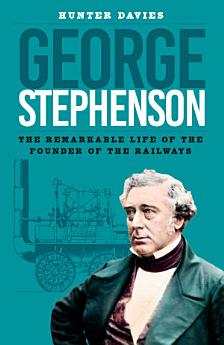George Stephenson: The Remarkable Life of the Founder of the Railways
About this ebook
From the moment he began work in the pit at the tender age of ten, he showed a natural talent for mending and inventing machines, slowly rising to become the colliery's resident engineer. However, he struggled to break through the class prejudices of the time; indeed, Sir Humphrey Davy, later President of the Royal Society, considered Stephenson (then an unknown pitman) 'a thief and not a clever thief'. This early battle was only one of many that Stephenson waged against the establishment.
Even so, Stephenson went on to build the world's first public railways, the Stockton and Darlington in 1825 and the Liverpool–Manchester in 1830. Much is known of these achievements and of his famous creation, Rocket, yet little is known of the man himself. In George Stephenson a colourful portrait is painted of the self-taught and often testy Geordie, whose Victorian invention is now the backbone of every nation on the planet.







